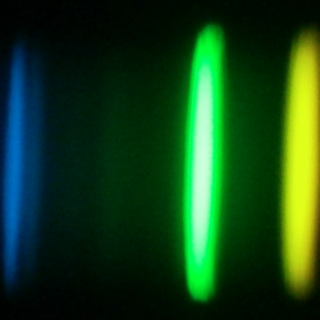Bibcode
Hambly, N. C.; Cropper, M.; Boudreault, S.; Crowley, C.; Kohley, R.; de Bruijne, J. H. J.; Dolding, C.; Fabricius, C.; Seabroke, G.; Davidson, M.; Rowell, N.; Collins, R.; Cross, N.; Martín-Fleitas, J.; Baker, S.; Smith, M.; Sartoretti, P.; Marchal, O.; Katz, D.; De Angeli, F.; Busso, G.; Riello, M.; Allende Prieto, C.; Els, S.; Corcione, L.; Masana, E.; Luri, X.; Chassat, F.; Fusero, F.; Pasquier, J. F.; Vétel, C.; Sarri, G.; Gare, P.
Referencia bibliográfica
Astronomy and Astrophysics, Volume 616, id.A15, 19 pp.
Fecha de publicación:
8
2018
Revista
Número de citas
35
Número de citas referidas
34
Descripción
Context. The European Space Agency's Gaia satellite was launched into
orbit around L2 in December 2013. This ambitious mission has strict
requirements on residual systematic errors resulting from instrumental
corrections in order to meet a design goal of sub-10 microarcsecond
astrometry. During the design and build phase of the science
instruments, various critical calibrations were studied in detail to
ensure that this goal could be met in orbit. In particular, it was
determined that the video-chain offsets on the analogue side of the
analogue-to-digital conversion electronics exhibited instabilities that
could not be mitigated fully by modifications to the flight hardware.
Aims: We provide a detailed description of the behaviour of the
electronic offset levels on short (<1 ms) timescales, identifying
various systematic effects that are known collectively as "offset
non-uniformities". The effects manifest themselves as transient
perturbations on the gross zero-point electronic offset level that is
routinely monitored as part of the overall calibration process.
Methods: Using in-orbit special calibration sequences along with simple
parametric models, we show how the effects can be calibrated, and how
these calibrations are applied to the science data. While the
calibration part of the process is relatively straightforward, the
application of the calibrations during science data processing requires
a detailed on-ground reconstruction of the readout timing of each
charge-coupled device (CCD) sample on each device in order to predict
correctly the highly time-dependent nature of the corrections.
Results: We demonstrate the effectiveness of our offset non-uniformity
models in mitigating the effects in Gaia data. Conclusions: We
demonstrate for all CCDs and operating instrument/modes on board Gaia
that the video-chain noise-limited performance is recovered in the vast
majority of science samples.
Proyectos relacionados

Abundancias Químicas en Estrellas
La espectroscopía de estrellas nos permite determinar las propiedades y composiciones químicas de las mismas. A partir de esta información para estrellas de diferente edad en la Vía Láctea es posible reconstruir la evolución química de la Galaxia, así como el origen de los elementos más pesados que el boro, forjados principalmente en los interiores
Carlos
Allende Prieto